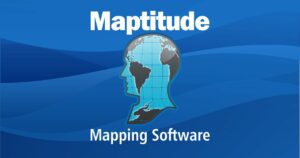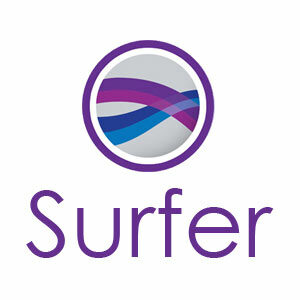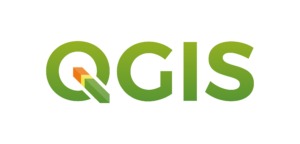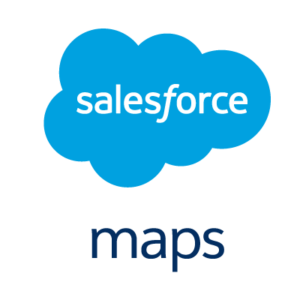This post will explain Geographic Information System. An instrument that examines spatial relationships, patterns, and trends is a geographic information system. This can be accomplished by relating geography to the data at hand, which helps GIS make sense in a geographic context. The primary functions of a GIS system are the generation of geographic data, management of that data in a database, pattern-finding analysis, and visualisation of that data on a map. GIS improves our comprehension of spatial linkages and patterns. With this, GIS technology combines the advantages of maps’ distinctive display and geographic analytical capabilities with database operations like query and statistical analysis.
Top 10 Geographic Information System Software In 2024
In this article, you can know about Geographic Information System here are the details below;
Both hardware and software systems are part of the GIS system. All types of data, including graphical, photographic, digital, and spreadsheet data, may be included in these application systems. In order to organise and retrieve the data more effectively, several layers of information are merged and enormous amounts of various types of recorded data are synthesized/manipulated using GIS software.
The technology known as GIS software is made to merge different maps and remote sensing data to produce various models that are helpful in a real-time context. Geographical concepts, applications, and systems are used in geographical information system technology.
1. Esri ArcGIS
ArcGIS is a GIS mapping software that offers a platform for mapping and analytics for geographical data collected. With flexible licencing options, ArcGIS expands some of the possibility for applying location-based analytics to any company activities. By analysing and visualising your data, you may share it with others in the form of maps, dashboards, reports, etc. ArcGIS can be used independently or in conjunction with other programmes to support location mapping. It is beneficial when using a collection of geographical algorithms and analytical data. Any form of sensor or device can be monitored in its location using ArcGIS software. This is another Geographic Information System alternative. Also check referral marketing software
2. Mapbox
An area is depicted graphically on a map. The map-designing tools and mapping libraries required to create dynamic, effective, and tailored maps that meet the requirements are provided by Mapbox GIS mapping software. Maps produced by Mapbox tools are thorough and precise worldwide. Each day, its Maps APIs can handle more than 5 billion requests. By utilising OpenGL technology for on-device rendering, MapBox creates extremely fast and flexible maps that can be styled dynamically and optimised using the user’s unique data.
3. Maptitude
This is another Geographic Information System alternative. One GIS mapping software, called Maptitude, offers the tools, maps, and demographic information that are helpful to visualise data by identifying geographic patterns in the available information and presenting the information in a more straightforward manner. Maptitude offers the advantages of desktop mapping and geographical analysis in a single, user-friendly solution. One of the greatest mapping programmes on the market, Maptitude boasts the most comprehensive feature set and the best performance. Its greatest and improved capabilities include the ability to create and alter maps, add data to the maps, and analyse graphics data.
4. Surfer
A 3D surface mapping software called Surfer aids in contouring the maps. The most frequent use of Surfer is to rapidly and easily transform accessible data into excellent outline, surface, wireframe, vector, image, shaded relief, and post maps. The Surfer software includes features like analysis tools that can be used to change interpolation and gridding parameters, assess spatial continuity of data using variograms, define faults and breaklines, or run grid calculations like volumes, transformations, smoothing, or filtering. The recorded information is stimulated to aid in comprehending. The 3D viewer makes it possible to model, analyse, and comprehend data more effectively and simply. You can use it to find data trends and patterns.
5. QGIS
QGIS is a user-friendly, open-source geographic information system that supports vector, raster, and database formats and functions. It is free and enables you to generate, edit, view, analyse, and publish geographical information on any OS, including Windows, Mac, and Linux systems. The Open Source Geospatial Foundation created QGIS (OSGeo). With the help of the robust symbology, labelling, and blending tools for a better understanding of maps, publishing QGIS work on the web is facilitated.
6. Salesforce Maps
To streamline the sales processes, Salesforce Maps offers lead creation, scheduling and routing, and data visualisation. Better yet, use a map-based interface to comprehend difficult-to-find data and make location-based decisions that boost productivity. The fastest routes with the smallest amount of fuel consumption are built using Salesforce maps. This makes it fairly certain that clients will be reached in a timely manner while building accurate prospect data and territorial visualisation. Salesforce is mobile-friendly and may be used to automate administrative tasks like check-in and check-out while travelling. This is another Geographic Information System alternative. Also check Courier Management Software
7. TerraSync Software
A GIS programme called TerraSync is intended for the effective gathering and upkeep of field GIS data. The acquisition of high-quality features and location data for GIS updates and maintenance is made easier by the robust system TerraSync. In addition to the aforementioned capability, it offers straightforward processes for rapidly and easily capturing high-quality data, including clever features like map-centric operation, graphical status display, and the capacity to swiftly and easily record a position offset. One can incorporate photo taking, together with the time, date, and place at which it was taken, into the data collecting workflow using TerraSync software. For field personnel to collect data and attain the necessary level of precision, either in real-time or after post-processing, Trimble TerraSync software can be beneficial.
8. CARTO
This is another Geographic Information System alternative. Your location data can be converted into business outcomes with CARTO. Data intake is made simple by CARTO since it has complete control over the spatial data. You can use their Data Observatory to obtain various location data streams on widely used geometries, which will speed up the collection of spatial data and simplify geographic analysis. You may create and construct unique applications and visualisations with CARTO to deliver important business insights. Integrate your analysis with the current processes. Through access to top-tier spatial analysis, CARTO shortens the time it takes to get insight.
9. GeoExpress
Using our unique, industry-standard MrSID format, GeoExpress GIS software enables geospatial professionals to compress photos. By supporting lossless and visually lossless compression, this format makes it possible to reduce file sizes without losing image quality. For superior visual data for analysis, GeoExpress software also has editing tools for geographical imagery compression. It includes common photo editing features like cropping and colour balancing. Almost every geospatial software, including ArcGIS, Global Mapper, QGIS, Autodesk, ERDAS, ENVI, SOCET GXP, and Microstation, may be utilised with GeoExpress.
10. Carto Vista
A web mapping software called CartoVista is useful for creating interactive web maps that connect GIS and decision-makers. To build and share maps that update automatically at set intervals, CartoVista accepts a wide variety of GIS data sources and formats. Maps are simple to deploy on any internal or external web server. To facilitate data sharing and understanding, CartoVista makes it simple to create colourful interactive maps. It is simple to configure and adapt the mapping styles with the aid of CartoVista Publisher, and to produce excellent cartographic tiling basemaps. This is another Geographic Information System alternative.
What is Geographic Information System (GIS)?
The acquisition, storage, analysis, query, management, display, and output of geographic data is handled by a well-organized piece of computer hardware, software, geographic data, procedures, and personnel, known as a geographic information system.
An instrument for examining spatial relationships, patterns, and trends is a geographic information system. GIS is made understandable for better use in a geographic context by integrating geography with the available data. The GIS system entails the creation of geographic data, its management in a database, its analysis to identify trends, and its visualisation and realisation on a map. GIS is helpful for gaining a better understanding of spatial linkages and patterns. Also check software companies in washington dc
What are the features of the Geographic Information System?
A tool for problem-solving and decision-making is the geographic information system. It is better suited for data visualisation in a spatial setting. The geospatial data collected from the spatial environment is analysed to obtain detailed information about the location characteristics and relationships to other features, the density of features in a space, happenings around the area of interest (AOI), what is happening close to a specific feature, and changes around the features over time.
Some of the crucial and essential components of GIS include:
MAPPING:
Real-world features can be mapped out spatially, and the spatial relationships between them can be seen using GIS.
Modeling data:
A GIS that may be used to represent the two- and three-dimensional features of the Earth’s surface, subsurface, and atmosphere using data points. A collection of three-dimensional points can be used to create isopleths lines, which indicate elevation contours, as well as slope analysis, shaded relief, and other elevation products.
TOPOLOGICAL MODELING
The spatial linkages that exist throughout digitally stored spatial data can be recognised and analysed using a GIS. These topological links can be used to create sophisticated spatial models and analyses. Included in these connections between geometric objects are adjacency, closeness, and containment.
The networks:
Along with linear network modelling, a GIS can simulate material routing. Values for slope, speed restriction, or pipe diameter can be added to network modelling. Network modelling is frequently used in transportation planning, hydrological modelling, and infrastructure modelling.
CAROLOGRAPHIC MODELING
Cartographic modelling is a GIS procedure where many thematic layers of the same location are created, processed, and assessed. Map layer functionality can be merged into algorithms, which can then be used to create simulation or optimization models.
Overlaying a map
Combining two kinds of spatial data to produce a new output vector data set. The geographic features and characteristic tables of both input data sets are combined into a single new output using a new data set union overlay. The intersection of the two input data sets is defined by an intersect overlay, which also keeps a set of attribute fields for each. With the exception of the overlapping area, the output area defined by the difference overlay contains the whole area of both inputs.
GEOSTATICS
With the help of specific data points and point-pattern analysis, geostatistics creates field predictions. Geostatistics refers to the statistical characteristics of the unique data. Because it uses graph hypothesis and matrix algebra to decrease the number of parameters in the data, it differs from ordinary applications of statistics.
What are the benefits of Geographic Information System?
One of the most useful and popular systems is GIS. In order to create maps, it is mostly utilised in computer cartography. However, the primary use of GIS is the analysis of geographic data and features using spatial and statistical methodologies. The following is a summary of just a few of the numerous GIS applications:
GIS in Agriculture: GIS is widely used in agriculture for crop productivity, soil mapping, and precision farming. It is applied to crops to prevent the spread of disease and pests. Indicators such as the Normalized Difference Vegetation Index can be used to assess global crop productivity (NDVI). The world’s freshwater withdrawals for irrigating crops can be calculated using GIS to capture irrigation infrastructure for land management considerations. By looking at the local farming terrain, farm priority zones can be easily established. A GIS aids in setting up and constructing standards for high-quality farming regions. GIS is helpful for understanding how rainfall is distributed spatially, and real-time sensors like SMAP, SMOS, and synthetic aperture radar can be utilised to reduce drought situations globally.
GIS for weather forecasting: A multi-dimensional NetCDF containing latitude, longitude, altitude, and time dimensions is utilised to map out the temperature using a GIS mapping system. With monitoring stations positioned all around the world, lightning strikes may be collected in real time and displayed on a map. Obtaining the global weather station latitude and longitude positions. Rainfall is shown on the National Weather Service website map.
Using GIS in forestry can help in managing timber, monitoring deforestation, and inventorying forest stands. By using real-time satellite surveillance of wildfires, GIS can help save animal lives.
The Use of GIS in the Army and Defense: GIS is extensively used in the military and defence. They use it for logistics planning, spy satellites, and location intelligence. utilising biogeographic theory and remote sensing photos to locate attackers or any form of threat. Making life-saving judgments on the battlefield can benefit greatly from the geographic data.
What can be the cost of the GIS software?
It is important to weigh the features against various sizes and scopes in light of each company’s evolving expectations and needs. The greatest decision to make is to invest in superior software while taking into account the pertinent user reviews. To learn more about the features and performance, ask for a free demo if the provider provides one. This might be the most effective technique to determine whether a bundle is too much for your standards or needs or is ideal for your specific organisation. Therefore, investing a little time today in the process of choosing the best GIS software will help you save time and money later on. A few open-source GIS programmes are also available that are useful for novices.
Conclusion
One of the most famous and crucial tools for collecting and studying geographical data is GIS. Geographic information systems (GIS) are useful for analysing data and identifying trends, patterns, and linkages. Geographical context also affects how we interpret and analyse facts and how we comprehend the world in which we live.













